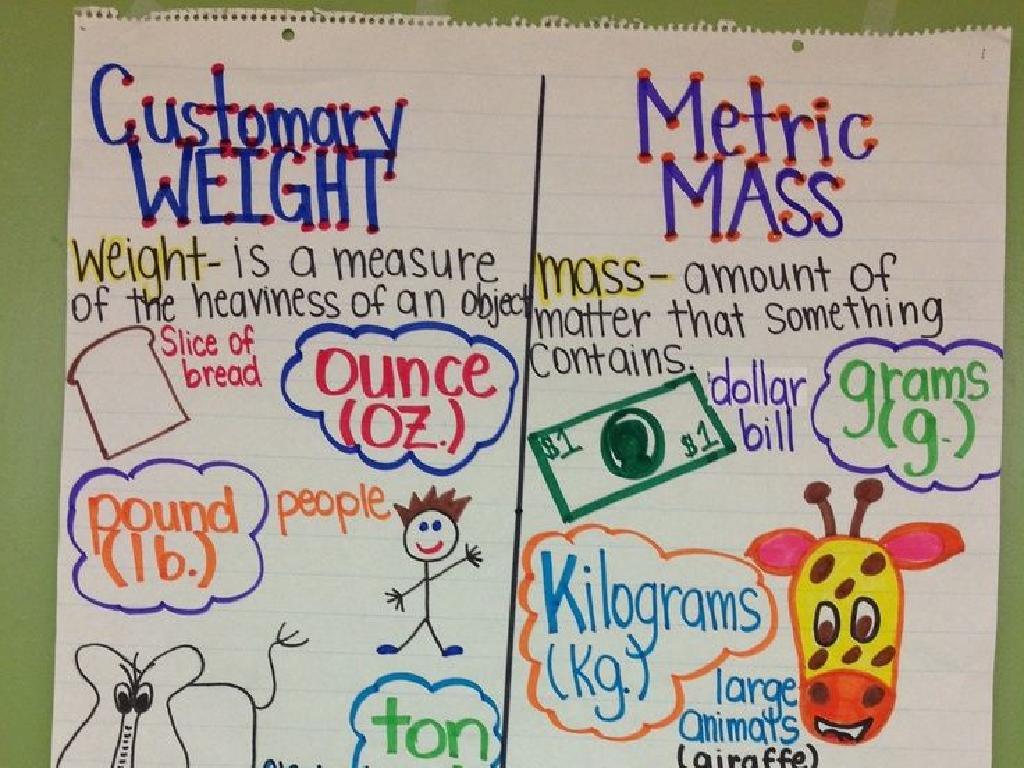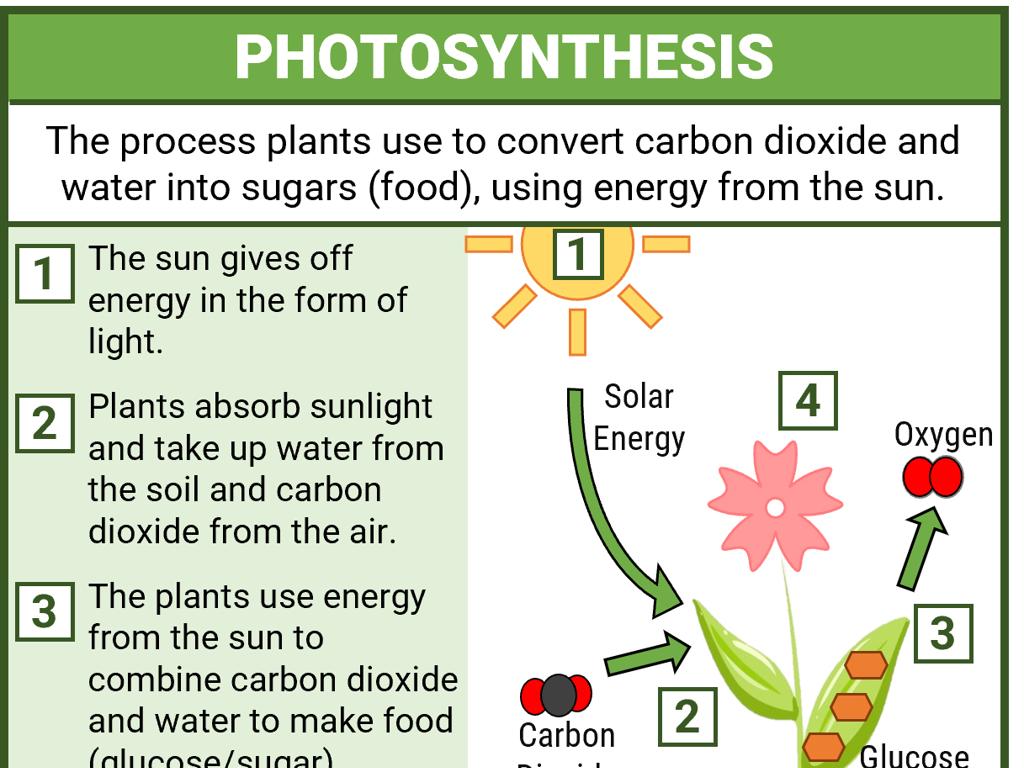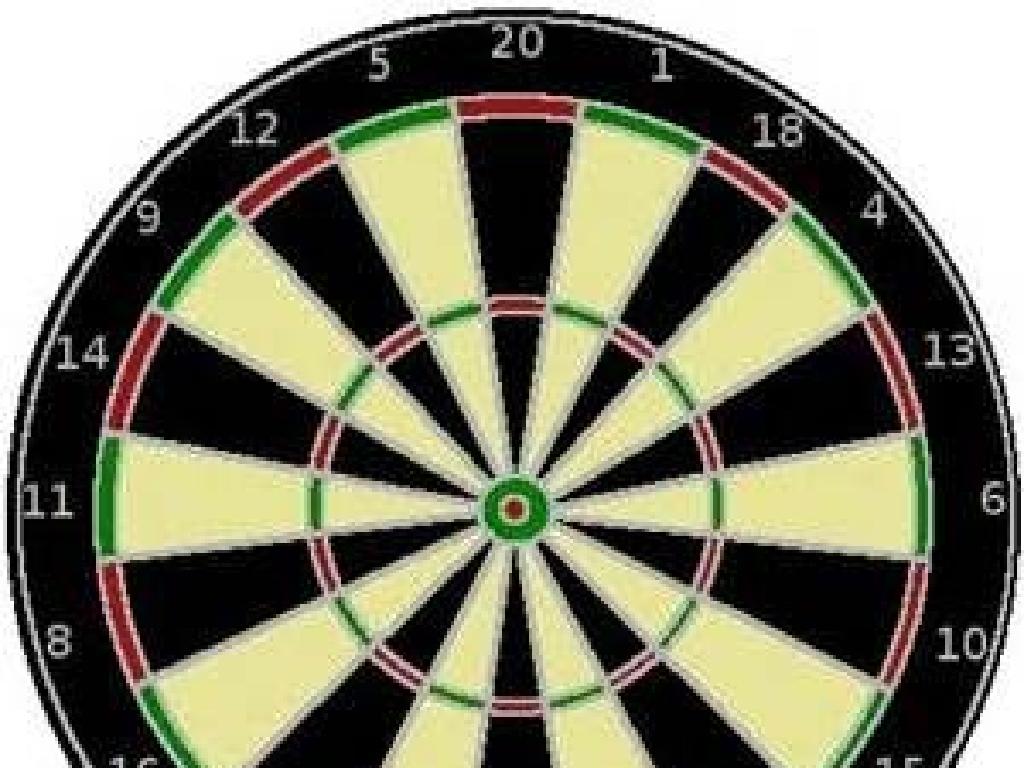Multiply Two Decimals: Products Up To Hundredths
Subject: Math
Grade: Fifth grade
Topic: Multiply Decimals
Please LOG IN to download the presentation. Access is available to registered users only.
View More Content
Multiplying Decimals: Up to Hundredths
– Understanding decimals
– Decimals represent parts of a whole, like 0.25 is a quarter
– Importance of decimal multiplication
– Helps in precise calculations in math and science
– Real-world decimal applications
– Used in money calculations, measurements, and statistics
– Practice multiplying decimals
|
This slide introduces the concept of multiplying decimals, a crucial skill in mathematics that students will use throughout their education and daily life. Begin by explaining what decimals are and how they represent fractions of a whole, which is essential for understanding their multiplication. Emphasize the importance of this skill in various fields, including finance for money management, science for accurate measurements, and even sports statistics. Provide real-world examples where decimal multiplication is necessary, such as calculating the cost of items or measuring ingredients in a recipe. Conclude with an encouragement for students to practice multiplying decimals with example problems to solidify their understanding.
Review of Decimal Concepts
– Understanding decimals
– Decimals represent parts of a whole, like 0.5 is half
– Decimal place values
– Tenths (0.1), hundredths (0.01), thousandths (0.001)
– Comparing decimals
– Use place value to determine which decimal is larger
– Ordering decimals
– Arrange decimals from smallest to largest or vice versa
|
Begin the lesson with a brief review of what decimals are, emphasizing their role in representing fractions and parts of a whole. Highlight the importance of place value by discussing tenths, hundredths, and thousandths, and how each position affects the value of the decimal. Use visual aids like decimal grids or number lines if possible. Then, guide students through the process of comparing decimals by looking at the highest place value first and ordering decimals by arranging them from the smallest to the largest or vice versa. Provide examples and encourage students to practice with a few problems to solidify their understanding.
Multiplication Basics: Decimals
– Recap multiplication facts
– Multiplication as repeated addition
– If we have 4 groups of 0.25, it’s like adding 0.25 four times
– Understanding zero in multiplication
– Zero times any number is always zero
– Practice with decimal products
– Find the product of 0.6 and 0.5
|
Begin with a quick review of multiplication facts to ensure students have a solid foundation. Explain that multiplication is another way to do repeated addition, which is a concept they are familiar with. Emphasize the importance of zero in multiplication, as any number multiplied by zero equals zero. This is crucial when dealing with decimals. Provide examples of multiplying decimals, such as 0.6 times 0.5, and guide students through the process to find the product up to the hundredths place. Encourage students to use grid paper to help align the decimal points correctly. The goal is for students to feel comfortable with the concept of multiplying decimals and to understand the role each digit plays in the final product.
Multiplying Decimals: Step-by-Step
– Multiply as whole numbers
– Count decimal places
– Add up the decimal places from both numbers
– Place the decimal in answer
– The product’s decimal point is placed to match the total count from step 2
– Practice with examples
– Try 0.25 x 0.4 to apply these steps
|
This slide is designed to simplify the process of multiplying decimals for fifth graders. Start by having students ignore the decimal points and multiply the numbers as if they were whole numbers. Next, they should count the total number of decimal places in the original numbers. This count will determine where to place the decimal in their final answer. For example, if there are three total decimal places in the numbers being multiplied, the product should also have three decimal places. Finish with practice problems, such as multiplying 0.25 by 0.4, to reinforce the concept. Ensure students understand each step before moving on to the next.
Multiplying Simple Decimals
– Example: Multiply 0.5 by 0.2
– Let’s see how 0.5 times 0.2 equals 0.1
– Multiply without the decimal
– Pretend 0.5 and 0.2 are 5 and 2
– Find the product as if whole numbers
– 5 times 2 equals 10
– Place the decimal in the result
– The decimal goes two places left: 10 becomes 0.10
|
This slide introduces students to the concept of multiplying two decimal numbers. Start with a simple example, 0.5 x 0.2, to demonstrate the process. Explain that we first ignore the decimals and multiply the numbers as if they were whole numbers (5 x 2 = 10). Then, we count the total number of decimal places in the factors (in this case, two places, one in each number). Finally, we place the decimal in the answer, moving it two places to the left to get 0.10, which simplifies to 0.1. Emphasize that the number of decimal places in the product is the sum of the decimal places in the factors. Practice with additional examples to reinforce the concept.
Multiplying Decimals: Beyond Basics
– Example: 1.25 x 3.6
– Let’s multiply 1.25 (dollars) by 3.6 (hours) to find earnings.
– Multiplying larger decimal numbers
– Just like whole numbers, but watch the decimal points!
– Placing the decimal in the product
– Count decimal places from both factors for correct placement.
– Practice with precision
|
This slide introduces students to more complex multiplication of decimals, using an example that combines a decimal with tenths and hundredths. Start by demonstrating the multiplication of 1.25 by 3.6, which can relate to a real-life scenario such as calculating earnings. Emphasize the importance of aligning the numbers correctly and the process of multiplying as if they were whole numbers. After the multiplication, guide students on determining the correct placement of the decimal point by counting the total number of decimal places in both factors. The final part of the slide should encourage students to practice these steps to gain confidence and accuracy in multiplying larger decimals.
Decimal Multiplication Practice
– Multiply: 0.75 x 0.4
– Product is 0.30
– Multiply: 2.5 x 0.12
– Product is 0.30
|
This slide presents two practice problems to help students apply their knowledge of multiplying decimals. For the first problem, guide students to multiply 0.75 by 0.4. Remind them to count the total number of decimal places in both numbers before placing the decimal in their answer. The second problem is slightly more complex, involving a two-digit decimal. Encourage students to use the same method, ensuring they understand the placement of the decimal in the product. After solving, discuss the importance of precision in decimal multiplication, especially when dealing with money or measurements. Provide additional problems for students who finish early or need extra practice.
Class Activity: Decimal Multiplication Game
– Pair up for a math challenge
– Roll dice to generate decimals
– Each dot on the dice represents a decimal place
– Multiply the decimals together
– Use paper to align decimal points correctly
– Present your answers to the class
– Explain how you solved the problem
|
This interactive game is designed to help students practice multiplying decimals in a fun and engaging way. Students will pair up, each pair receiving a pair of dice. They will roll the dice to create two decimal numbers, with each dot on the dice representing one-tenth. After generating their random decimals, students will multiply them together, ensuring they align the decimal points correctly on paper. Once they’ve calculated their products, each pair will share their solutions and methods with the class. This activity not only reinforces the concept of decimal multiplication but also encourages teamwork and communication skills. As a teacher, circulate the room to assist and challenge students with different levels of difficulty based on their understanding.
Wrapping Up: Decimal Multiplication
– Review of decimal multiplication
– We learned how to multiply decimals up to hundredths.
– Practice makes perfect
– Regular practice is key to mastering new math skills.
– Homework: Multiplication worksheet
– Complete the worksheet to practice multiplying decimals.
– Keep practicing at home!
|
As we conclude today’s lesson on multiplying two decimals, it’s important to emphasize the significance of practice in mastering this skill. The homework assignment is a worksheet that includes problems requiring students to multiply decimals up to the hundredths place. This will reinforce what they’ve learned in class and help them become more confident in their ability to handle decimal multiplication. Encourage students to take their time with each problem and to check their work carefully. Remind them that making mistakes is a part of learning and that with each worksheet they complete, they’re improving their math skills.






